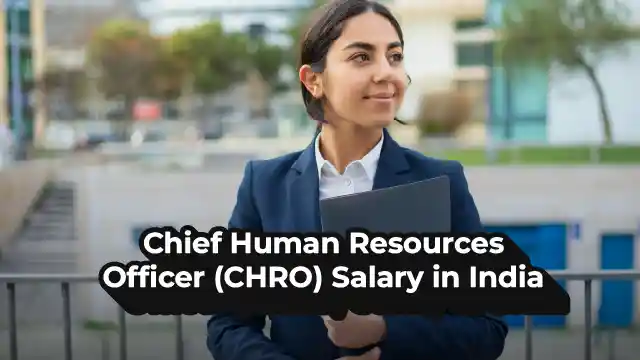Key Responsibilities of a CRO
The roles and responsibilities of the Chief Risk Officer include the following:
- Identifying and Assessing Risks: The main duty of a CRO is to recognise possible risks that could affect the organisation in terms of finances, operations, strategies, and reputation. They analyse internal processes, market scenarios, geopolitical matters, and emerging perils to stay prepared.
- Developing Risk Mitigation Strategies: Once the CRO has pinpointed the possible risks, they team up with the other departments in the office to develop strategies to reduce or eliminate those threats. Effective risk mitigation plans are likely to reduce the odds of disruption and loss to a great extent.
- Regulatory Compliance: One of the other duties of a CRO includes taking care of regulatory compliance. It includes checking and ensuring that the company adheres to all applicable rules, regulations, and industry standards.
- Monitoring Operational, Financial, Cyber, and Reputational Risks: The role of a risk officer also includes monitoring key areas where risks may arise. It covers operational, financial, cyber, and reputational risks.
Types of Risks Managed by a CRO
Take a look at the table below to understand the types of risks overseen by a CRO. We also have some examples for better clarity:
| Type of Risk |
Description |
| Strategic Risks |
These risks affect the long-term goals and vision of a company. Here, the role of a risk officer is to oversee that strategic plans are assessed for possible risk and modified as and when necessary. |
| Financial Risks |
Such threats impact a company's revenue, cash flow, and profitability. The CRO protects the financial stability of the business through management, predictive analysis, and scenario planning. |
| Operational Risks |
Operational risks often stem from internal processes, systems, or human error. The role and responsibility of a Chief risk Officer here is to identify the loopholes in operations and conduct process improvements to reduce vulnerability. |
| Legal and Compliance Risks |
These risks arise if a company fails to abide by the laws, regulations, or industry standards. The CRO makes sure that compliance frameworks are in place and updated. |
| Cybersecurity Threats |
Cyber risks are everywhere. The CRO bands with IT and cybersecurity teams of a company to develop prevention, detection, and response strategies. |
CRO’s Role in Corporate Governance
Below are the crucial roles and responsibilities the Chief Risk Officer (CRO) plays in corporate governance:
- Working with the Board and C-Suite: The CRO collaborates with the board of directors and other C-suite officers to ensure that the risk management programs and the strategic goals of the company are on the same page.
- Reporting Structures and Accountability: The CRO should report directly to the CEO and board to maintain independence and authority. It allows them to work without unnecessary influence and hold business units accountable for risk-related decisions.
- Influence on Strategic Decisions: The CRO evaluates risks in key decisions, such as new markets, mergers and acquisitions, etc. It helps them align with the risk appetite and long-term goals of the company.
Skills and Qualities of an Effective CRO
An effective CRO should have a combination of technical skills, analytical abilities, and leadership qualities. Let's take a quick look at the key skill areas:
- Risk assessment expertise: A CRO must be proficient in identifying, analysing, and mitigating various risks. They should also be well-versed in the tools and frameworks for risk management.
- Strategic thinking: A good CRO should be able to predict and understand how risks can influence the long-term objectives of a company. They should be capable of adapting to changing environments and making sound judgments about threats.
- Communication and leadership: They should be able to communicate the risk information to key stakeholders while motivating them to take the right action at the right time. Strong interpersonal skills are a must-have.
- Regulatory knowledge: The CRO needs to have a deep understanding of relevant regulations and industry standards to ensure the company complies with them.
CRO vs Other Risk-Related Roles
Refer to the tables below to get clear insights into CRO vs. other risk-related roles in a company:
CRO and CFO
|
| Aspects |
CRO (Chief Risk Officer) |
CFO (Chief Financial Officer) |
| Primary Role |
Enterprise Risk Management (ERM) |
CFO is responsible for financial strategy and management |
| Risk Focus Range |
Broad, including operational, strategic, compliance, and reputational risks |
Narrow, including financial risk |
| Approach |
Preventive and control-based approach |
Performance-driven and numbers-based approach |
| Tools Used |
Risk assessment models, ERM software, and compliance tools |
Financial models, budgeting tools, ERP systems |
| Reporting Line |
CEO or Board of Directors |
CEO or Board of Directors |
| Contribution |
Ensuring informed and risk-aware decision-making across the company |
Driving financial sustainability and growth |
CRO and CSO
|
| Aspects |
CRO (Chief Risk Officer) |
CSO (Chief Security Officer) |
| Primary Role |
Company-wide risk management |
Security management (cyber, physical, data) |
| Risk Focus Areas |
Strategic, operational, compliance, and reputational |
Cybersecurity, physical security, and data protection |
| Approach |
Holistic and policy-driven |
Technical and tactical |
| Tools Used |
ERM frameworks, risk dashboards, and compliance systems |
Firewalls, SIEM, physical security systems, and policies |
| Reporting Line |
CEO or Board of Directors |
Typically, CIO, COO, or CEO |
| Contribution |
Ensuring all possible risks (including security) are understood and managed |
Implementing and enforcing security infrastructure |
How Do They Collaborate?
|
| Role |
Area of Collaboration |
Distinct Contribution |
| CRO + CFO |
Financial risk, capital adequacy, stress testing |
CRO integrates risk into strategic decisions
CFO focuses on financial performance
|
| CRO + CSO |
Cyber and operational risk, incident response |
CRO assesses and reports enterprise-level implications
CSO secures assets
|
| CFO + CSO |
Budgeting for security initiatives, compliance |
CFO ensures funding and cost-efficiency
CSO implements safeguards
|
| All Three |
Risk-informed strategy, regulatory compliance |
Combined expertise reduces organisational exposure and increases resilience |
The Evolving Role of a CRO in the Digital Age
Below is an idea of how the CRO’s focus is changing in the digital age:
| Focus Area |
Key Risks |
CRO’s Evolving Role |
| Tech-Driven Risks |
AI bias, system failures, and digital disruption |
Assess emerging tech risks, update risk frameworks |
| Data & Cyber Threats |
Privacy breaches, cyberattacks |
Integrate data/cyber risks into ERM, align with CSO |
| ESG (environmental, social, and governance) Risks |
Compliance gaps, reputational damage |
Monitor ESG metrics, embed into risk strategy |
Why Startups and Growing Businesses Should Care About Risk Management?
Startups and growing businesses often underestimate the importance of risk management, especially in the early stages. With limited resources and fast-paced environments, they are particularly vulnerable to legal, financial, and reputational risks. It is often due to overlooked basics like compliance, cybersecurity, or proper contract management.
As these businesses scale, new risks emerge from expanding into new horizons, launching products, or managing larger teams, all of which can strain internal controls and governance.
Without proactive risk oversight, companies can face serious setbacks, including regulatory fines, service failures, or even loss of investor confidence during due diligence.
Where Insurance Complements the CRO’s Role?
Insurance complements the role of a risk officer by serving as a strategic risk transfer tool. Business insurance helps deal with financial losses from unforeseen events, while Directors & Officers Insurance protects leadership from personal liability in governance-related claims. Together, they support the CRO’s efforts to safeguard organisational resilience and align risk exposure with the company’s appetite.
Conclusion
The Chief Risk Officer (CRO) plays a key strategic role in navigating complex and fast-evolving risk landscape. From ensuring compliance and cybersecurity to integrating ESG and tech risks into business planning, the CRO adds long-term value by aligning risk with opportunity.
As businesses become more digital and interconnected, the demand for agile, forward-looking CROs will only grow. Future-focused CROs will not just protect the enterprise but help shape its resilience, sustainability and competitive edge.




















 Expert advice made easy
Expert advice made easy


